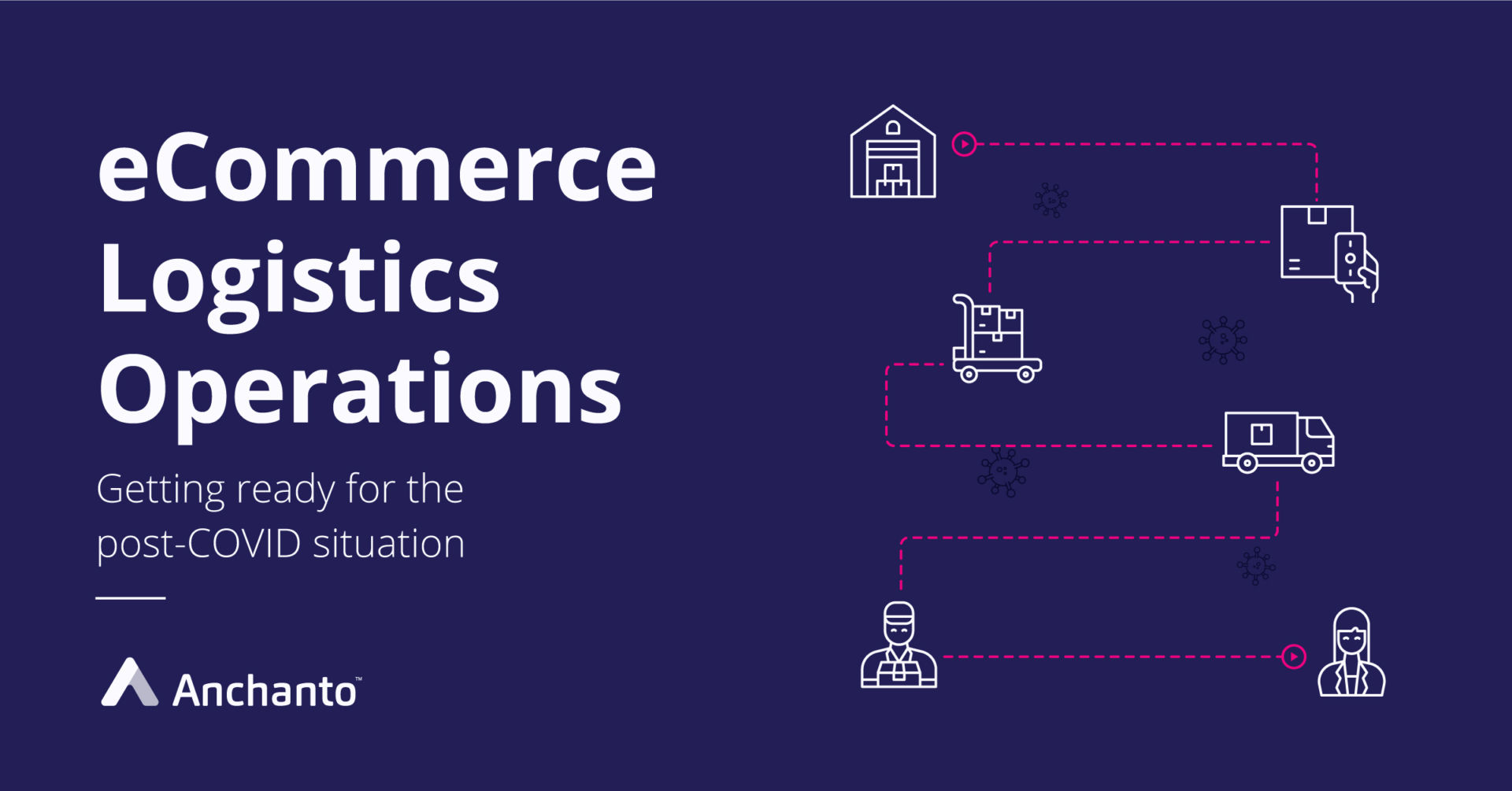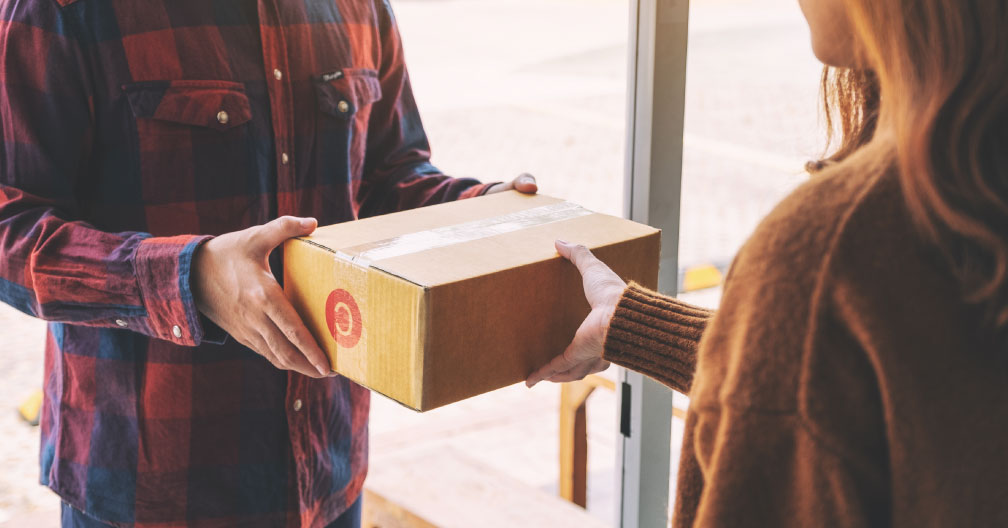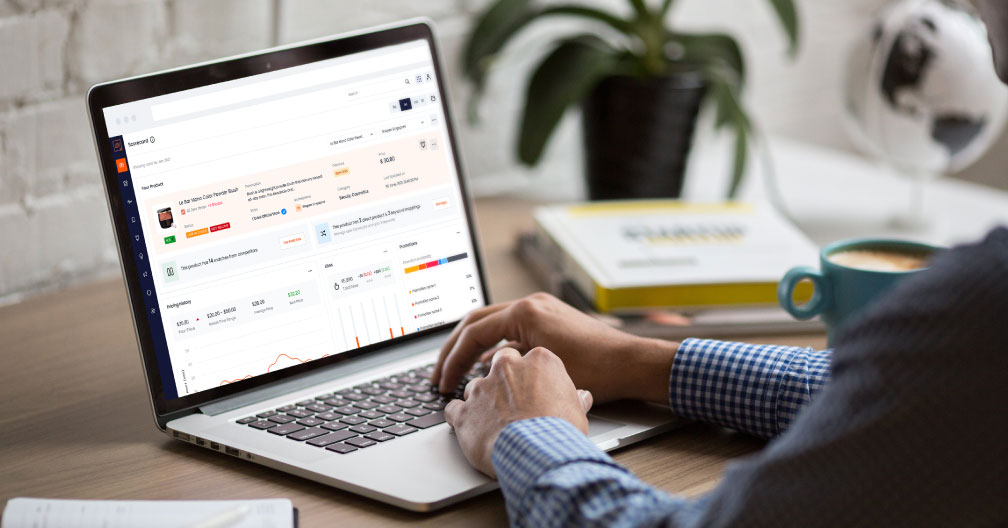
Getting your eCommerce logistics operations ready for the post-COVID situation
The LogTech Asia Virtual Summit focused on different sessions that could help businesses align technology to overcome the post-COVID situation. The session conducted by Anchanto COO, Abhimanyu Kashikar explained the transformation of business structure and preparing for Post-COVID beforehand by transforming businesses to online channels and getting eCommerce operations ready.
The impact of COVID-19 has had a perilous effect world-wide. Businesses are reorienting their operations, navigating through economic issues and aligning with national & international directives.
In order to help other businesses get through these trying times, Anchanto participated in The LogTech Asia Virtual Summit that was conducted on April 29, 2020. The summit focused on how technological advances could change the business landscape in Asia. It hosted about 26 distinct topics from leaders across multiple segments.
Abhimanyu Kashikar, Anchanto’s Co- founder and COO proposed new opportunities that lie ahead post the pandemic through his session on Getting your eCommerce logistics operations ready for the post-COVID situation.
This session focussed on sharing industry insights for businesses on the situation, what to expect and how to emerge stronger with the right set of strategies. Here’s an excerpt about the session in brief followed by the Q&A session.
Impact of COVID on business landscape:
The changing times have changed the landscape for sellers, retailers and businesses as a whole. Typically, the business landscape for the sellers and retailers were offline businesses, 3PL logistics players and retail businesses (essentials, luxury products, fashion and apparels). The main issues that the old seller landscape are now tackling is lack of operations, technology and a complete drop in market demand:
This in turn, has given rise to various seller landscapes that will be discussed further in this article.
Driving factors to New Seller Profiles:
Offline businesses are severely affected by their suppliers’ support being completely shut down. They have realized the growing need to shift focus from offline to online channels. Logistics players on the other hand, are struggling hard to smoothly run operations either due to lack of right set of processes or technology support.
Change in Consumer Behavior Pattern:

According to the study conducted by Nielsen, there was a 43% rise in sales in Singapore’s FMCG products. Of which, the biggest shifters to online channels was health care and daily essential products. With the changing times, hand sanitizers contributed almost 10 times the increase in sales than last recorded in December 2019.
As the consumers are focusing more on their savings and minimizing their discretionary expenses, it is estimated that most of the spending will be concentrated in the last two quarters. Experts also predict that business scenarios will be very different by the time the world emerges from the pandemic into normalcy.
The severity and expanded time will enable a completely new consumer pattern wherein old generation people who earlier relied on conventional shopping experience or people who earlier were eCommerce shy will be well-acquainted with the system and prefer to shop online.
Impact on eCommerce logistics:
Although the COVID-19 has proven to be a significant catalyst in transforming retail businesses to eCommerce, there are some teething problems that logistics businesses are currently trying to overcome.
Logistics players have reported sudden increases in their operational costs, labor costs and end-to-end supply chain costs. A study of 600 logistics players conducted by PYMNTS reported that almost 75% supply chain managers encountered issues in trucking and clearing services, increased supply chain costs and distorted replenishment cycles. The shifting pattern of consumer behavior towards eCommerce has in fact created a ripple effect due to increased demand thus enforcing offline businesses to shift in online selling.
Additionally, cross border logistics has been impacted the most due to the global crisis with continued international freight restrictions and 90% commercial flights being grounded; which could drive to improve the face of local eCommerce.
Embrace the CHAOS Model for Post-COVID:
Organizations that are gradually understanding the need to shift to online retail may want to refer to the CHange- Align-Optimize-Scale (CHAOS) Model which will prove beneficial in order to emerge strong after the global crisis.
CHange: Redesigning and transforming the fulfillment processes, KPIs, resources in a way so that consumables reach on time and in desired form.
Align: Aligning all the operations whilst honoring the changing restrictions, government directives that will be imposed without hampering the efficiency.
Optimize: Managing all macro as well as micro operations like picking, packing, cross docks, etc. in accordance with the acquired demand.
Scale: Not just scaling of warehouse operations, but to have a high-level approach to scale capabilities of resources, processes and systems available.
How can technology help?
With operational costs already skyrocketed, it is essential that businesses must find a cost-effective yet an efficient solution. Technology can align the demand, processes and operations in a well synchronized system. Thus, having an error-free, scalable and multichannel business operations through technology is the next big step that business must take in the post-COVID times.
Here are the Q&As that took place during the session:
-
Diversify your offerings
-
Start looking to offer essentials, since it is the need of the time now
-
Look for a technology that can support you while going through the change.
-
There will be a shortage of manpower in the short-term that needs to be considered as well.
-
Look for more suppliers since the lockdowns will not allow inter-zone transfers
Q. The covid-19 has “killed” the need for non-essential commodities like fashion, etc… Do you see this happening on eCommerce?
Well, my opinion is that things will soon be the same as they were before the pandemic; however, they might happen differently. To elaborate- For consumers, things will go back to normal (after maybe 2 or 3 quarters or even a year from now).
But, businesses and operational entities like, supply chain and logistics will function in a completely new form than what we see today. They will start focusing more on achieving local and nearshore demands to enable more growth in terms of setting up small logistics centers. Therefore, to answer your question, eCommerce- irrespective of the category they cater to will certainly grow post Covid-19.
In fact, I see that a lot of businesses will be looking to diversify their categorical offerings and those who earlier were only focusing on offline will start expanding in the online space too.
Q. What are your views on the major players like Lazada dominating eCommerce logistics in the future? will independent smaller platforms be able to survive?
Lazada and other strong marketplaces in the SEA (South East Asia) have a great opportunity to dominate. Currently, they are already strong in SEA and comparatively the webstore or brand.com is not that popular in this region. But, with what we frame as new normal shown, Lazada or other marketplaces will have to reach to more consumers and sellers outside the major cities in the countries of their presence, to continue to expand.
With the COVID situation, we have started observing that many small businesses are launching their web stores only to be relevant. But they will have to keep on optimizing themselves. It is very important as they can fulfil the needs of their super local consumers and their demands, while the marketplaces will continue to serve a different segment.
Q. How about business continuity among eCommerce merchants during those lockdowns, any advice?
It varies on the size and shape of the business. Many sellers or eCommerce merchants like you stated, are now looking at essentials as a category to stay in the game. I believe Ideally what can be done is:
-
Diversify your offerings
-
Start looking to offer essentials, since it is the need of the time now
-
Look for a technology that can support you while going through the change.
-
There will be a shortage of manpower in the short-term that needs to be considered as well.
-
Look for more suppliers since the lockdowns will not allow inter-zone transfers
But then again as I said it depends on the flexibility and agility of the business.
Q. Do you find that Singapore is a good place to start and grow a Logitech company? What kind of challenges do you face when you start expanding across SEA?
Absolutely! Singapore is one of the best places to start a venture and validate the concept. It is good in infrastructure, adoption of new technology, a young, cosmopolitan and business driven ecosystem. So, for sure there will be a quick consumption. However, not all countries in SEA are like Singapore. Depending on the concept and product you offer, some of the challenges one would face while expanding outside Singapore are
-
Infrastructure related issues
-
Adopting technology:Since labour is costly in Singapore, they found an alternative with technology. However, this may not be true for other nearby nations.
-
Localization of your product
-
Telecom penetration, etc.
Q. What has been the impact of the pandemic on your overall business, sales pipeline but also on your own operations?
I would be lying if I say no impact. Yes, there was a sudden dip in the healthy pipeline for us when the countries started lockdown plans. However, it was temporary and we have now started seeing increase in the sales enquiries. Reason being, a lot of retailers, sellers, brands and 3PL companies are looking to expand and are looking for technology options that can help them save time, effort and cost. Based on our learning, we also guide them to take-off well in the new business so the teething issues can be taken care of. We have seen 15-40% growth in the enquiries now and our pipeline is back to normal after seeing a slack for 4 weeks in a row. A quick insight from what our customers observed is that they are growing and are able to use our platform as they were quick to diversify and expand their offerings.
Q. Does SelluSeller integrate with other last mile delivery startups? which ones?
SelluSeller and Wareo are integrated with many delivery/ last-mile companies across SEA since our customers demand different options. For example, we are integrated with DHL, QXpress, NinjaVan, Entrego, Black Arrow, PosLaju, etc. You can find more details on https://www.selluseller.com/integrations.


